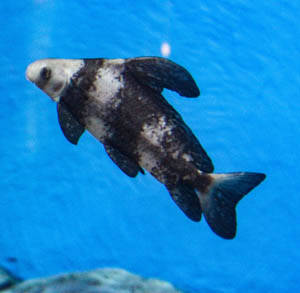
Alias Myxocyprinus asiaticus,,Rouge fish, grilled bream, yellow steak, leaf plate, red fish, purple bream, bird fish, blood steak, pink steak, etc.
Family Cypriniformes Asteridae Myxocyprinus
The Latin name of the mullet is Myxocyprinus asiaticus, and there is no subspecies.

The ancestors of the mullet can be traced back to the Mesozoic era when dinosaurs ruled. The earliest ancestor of the mullet is called the primitive bony swim bladder fish. According to research, this fish appeared in South America in the late Jurassic period. There are two major categories of primitive bony fish: one is the primitive characins; the other is the clams, and these two categories later arrived in Africa. As the earth continued to move, Africa and South America began to separate in the middle of the Cretaceous period, so the mullet families on the two continents could only survive and evolve independently. In the middle of the Paleocene, the African continent was connected to Europe and western Asia of the Eurasian continent, and the ancestors of this branch of mullet in Africa marched towards Asia and Europe. However, due to changes in the geological environment and the influence of the Quaternary Ice Age, mullet fish began to gradually die out. In the Miocene, some mullet fish lived in places such as the Yangtze River and the Minjiang River; another part of mullet fish arrived in North America about 50 million years ago through the "land bridge" connecting North America and Asia. The unique geological conditions in North America allowed mullet fish to reproduce well there. In the middle of the Miocene, they spread throughout North America and evolved into a large family.
The rosy barb is a large mid- and bottom-layer freshwater fish. From its downward-pointing mouth, it can be seen that this fish is a bottom-feeding fish, mainly feeding on benthic invertebrates and organic matter in the mud at the bottom of the water, and also eating some higher plant fragments and algae.
The juvenile and adult rosy barb have different shapes and ecological habits. Usually, the habitat required by the fry and juvenile fish is often clustered among the gravels with slow water flow, mostly active in the upper layer of the water body, swimming slowly, and the half-grown fish are accustomed to living in the middle and lower reaches of lakes and rivers, the middle and lower layers of the water body, and move slowly. The adult fish mostly live in the upper reaches of rivers and the middle and lower layers of the water body, and move vigorously.
Generally, male fish are sexually mature when they are over 5 years old and female fish are over 7 years old. In mid-February every year (around the Rain Water solar term), the parent fish with nearly mature gonads will go upstream. The spawning grounds of the Yangtze River are in Jinsha River, Minjiang River, Jialing River and other places. The breeding season is from early March to late April. When the water temperature is stable above 13℃, spawning begins. The breeding water temperature is 14-22℃, and 18-22℃ is the best. When the water temperature is 16.5-18℃, the fertilized eggs can hatch after 7-8 days. The newly hatched fry lie on their sides at the bottom of the water, and will swim horizontally for 6-7 days to feed. During the spawning period, both male and female parent fish will have obvious pearl stars and rouge colors. After spawning, the parent fish will still stay near the spawning ground until the water recedes in autumn, when they will return to the deep water of the main stream to hibernate.
After the Gezhouba Dam was built, the broodstock in the middle and lower reaches of the Yangtze River could not swim upstream to the Tuojiang River, Minjiang River and other major tributaries to spawn, and the environment of some spawning grounds in the Yichang section of the river was also destroyed. Although breeding groups of Chinese redfin mullet are still found in the river section below the dam, the number of naturally existing wild groups continues to decline due to overfishing.
Protect wildlife and eliminate game.
Maintaining ecological balance is everyone's responsibility!